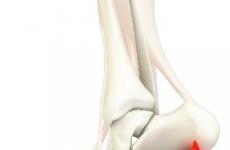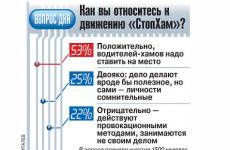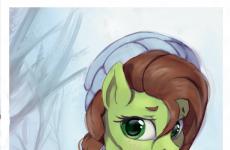What document establishes general fire safety requirements. General requirements for fire safety
General requirements fire safety
Fire safety rules regulated by law Russian Federation, include a number of fire safety requirements, which are mandatory for application and implementation by various government entities, local governments, enterprises and organizations of any form of ownership and organizational and legal forms. Also, fire safety rules must be observed and followed by employees and officials, private entrepreneurs , legal entities, as well as citizens of the Russian Federation, Foreign citizens, stateless persons. Requirements for the implementation of fire safety rules are aimed at protecting the life and health of citizens, their property, property of individuals and legal entities, protection of property of state and municipal authorities, as well as protection environment... Organizations, enterprises, their officials, employees and citizens who have violated the requirements and fire safety rules are liable under the legislation of the Russian Federation. : 167 part 2 of the Criminal Code of the Russian Federation "On arson", 168 part 2 of the Criminal Code of the Russian Federation "On the careless destruction of other people's property when handling fire", 219 of the Criminal Code of the Russian Federation "On violation of fire safety rules", etc.
Rules of conduct in case of fire
To study the available instructions, the evacuation plan, the location of the buttons for turning on the fire alarm, fire extinguishing means.Every citizen, in the event of a fire or revealing signs of burning, is obliged to immediately call the service fire department by phone 112, 02, giving the exact address of the object, the estimated place of the fire, as well as your last name, first name and patronymic. If possible, accept all necessary measures to evacuate people from the place of fire, to help extinguish the fire, as well as to assist in taking measures for the safety of property and other material values. Heads of enterprises, officials, persons who own or use property on a lease or contract basis, as well as persons responsible for ensuring fire safety, are obliged to arrive at the site of the fire, as well as provide the necessary information to the fire brigade units that are involved in eliminating the fire and carrying out urgent rescue operations on the presence of flammable, explosive, potent poisonous and explosive substances at the facility necessary to comply with the safety of personnel It is also necessary to send a repeated message about the occurrence of a fire to the fire protection service and inform the management of the enterprise or organization, the dispatcher and the person responsible for duty at the facility.
Organization of events in case of fire
In the event of a fire, it is necessary to organize measures to evacuate people from the building, using all the forces and means available for this. Check the serviceability and inclusion in the work of all automatic systems fire protection. If necessary, turn off the power supply, with the exception of fire protection systems. Stop the operation of the transporting equipment (elevator) and devices, units, apparatus and other electrical equipment. Cut off the supply of raw materials, steam, gas and water communications, as well as turn off the ventilation systems in the emergency room and adjacent rooms. In addition, it is necessary to carry out a number of other measures to help prevent the spread of fire and smoke from other areas of the building. mandatory it is necessary to stop all work in the building that is permissible technological process production, except for work carried out with the aim of extinguishing a fire. Take the persons who are not involved in extinguishing the fire outside the danger zone, and before the arrival of the fire brigade, take over the management of organizing measures to help extinguish the fire. ...
Evacuation
At enterprises and institutions, when more than ten employees are at one time on one floor, a plan or scheme for the evacuation of personnel in the event of a fire is developed and posted, and a fire warning system should also be provided for people in the premises. should develop additional instruction in addition to the existing plan for the evacuation of people, which would determine the actions of workers in the event of a fire, a safe and quick evacuation of people. In accordance with this instruction, at least once every six months, it is necessary to carry out practical training for workers involved in the evacuation. For objects of a round-the-clock working regime, it is necessary to develop instructions that would determine the measures of behavior of the working personnel, both in the daytime and at night. and timely fulfill all necessary instructions stipulated in the fire safety regulations.
For buildings complex design and unique buildings, in addition to the existing requirements and rules of fire safety, additional fire safety rules should be specially developed that would reflect the specifics of the operation of these buildings and structures, and also take into account their fire safety. Special additional rules must be agreed with the relevant state fire control authorities in accordance with the procedure established by law. At each production facility, special instructions should be developed that would determine fire safety measures for each specific explosion and fire hazardous facility and fire hazardous area at the enterprise. Each employee of an enterprise or organization must be instructed accordingly. fire safety and only then be admitted to work. When the specifics of the work change, each employee must undergo additional instruction and training in the timely prevention, response and extinguishing of a possible fire in the manner prescribed by the management of the enterprise. according to the specifics of the work performed by them, by virtue of existing regulatory acts and documents, as well as other regulatory legal acts, they must comply with the relevant fire safety rules and requirements, as well as ensure their implementation at certain working areas.
FIRE SAFETY INSTRUCTIONS
IN ADMINISTRATIVE BUILDINGS AND PREMISES
1. This Instruction was developed on the basis of the requirements of the general facility instruction and is mandatory for all workers and employees in the administrative premises of the organization. Violation of the requirements of this Instruction entails liability in accordance with the current legislation of the Russian Federation. 2. The area adjacent to office buildings must be kept clean at all times and systematically cleaned of containers, garbage and other combustible materials. 3. All buildings must be freely accessible. The condition of the roadway should not impede the passage of fire trucks. Driveways and entrances to buildings and fire water sources, as well as approaches to stationary fire escapes, fire fighting equipment and equipment must always be free. Fire breaks and roads between buildings are not allowed to be used for storage of materials, equipment, containers and for parking of cars and trucks. 4. On the territory administrative buildings it is prohibited to place drums with flammable and flammable liquids, as well as cylinders with compressed and liquefied gases. 5. Protective layer plaster or other fire retardant coating structures in the premises, along the escape routes must be maintained in good operational condition. 6. The electrical panels located in the stairwells must be securely closed with locks or locks. 7. Attic spaces must be kept clean and tidy. The windows of attics and technical floors must be glazed and closed. 8. Doors of attics, technical floors, basements, as well as doors of ventilation chambers must be kept closed. Doors Keys attic spaces must be stored in a strictly established place, which must be warned about by an inscription at the entrance to the attic. 9. It is not allowed to store flammable materials or objects in the attic spaces of buildings, with the exception of window frames, which must be folded at least 1 m from the air ducts and do not obstruct the passage through the attic with them. 10. Basements (technical undergrounds) must be kept closed. Keys from entrance doors basements should be located at the checkpoint. At the entrance to the basements and technical floors, it is necessary to post their layout plans. 11. In the buildings of administrative institutions it is prohibited: 11.1. Place stores, workshops, warehouses with combustible materials. 11.2. Arrange storerooms and closets in stairwells and corridors, as well as store any things, furniture, materials, etc. under the flights of stairs and on the landing. Under the flights of stairs on the first and basement floors only premises for central heating control units, water metering units and electrical control rooms, fenced with fireproof partitions, are allowed. 11.3. Remove door closers or other self-closing devices for staircase doors. 11.4. To remove the door panels, fire doors provided for by the project in the corridors, staircases; disassemble fireproof partitions... 11.5. Heat pipes for heating, water supply and sewerage with blowtorches or using an open flame. They should be warmed up with steam, hot water or sand and other fire safe methods. 11.6. Store flammable and combustible liquids, explosive materials and substances in basements, corridors, staircases, attics. 11.7. To carry out electric and gas welding works without preliminary cleaning of the welding place from combustible materials and without providing the place of production welding works primary fire extinguishing means. Hot work must be carried out with the permission of the persons responsible for the operation of buildings and premises. After the completion of hot work, it is necessary to carefully check the premises, structures and objects adjacent to the place of their implementation in order to exclude the possibility of fire. 11.8. Smoke in the building and use open fires in basements, attics and storage areas for combustible materials. 11.9. Arrange warehouses for combustible materials, workshops in the premises of the basement and basement floors, if the entrance to these premises is not isolated from the common stairwells. 11.10. Install blind metal grilles on windows. 11.11. Use technical floors, technical undergrounds, ventilation chambers and machine rooms for other than their intended purpose, store flammable materials in them. 11.12. Use flammable liquids for cleaning floors and dressing. 11.13. Leave energized office equipment, radios, calculators and other household electric heating appliances when leaving the premises. 11.14. Arrange baths, steam rooms (saunas) in the building.
IT IS IMPORTANT FOR YOU AND YOUR CHILDREN IN PURPOSE
ENSURING THE FIRE SAFETY OF YOUR
HOUSING
Fires can happen to anyone. The only way to save the kids is to teach them fire safety. This should be the responsibility of every parent. They need to make sure the kids know what to do. Tell them about a possible fire. The discussion will be made easier with a map of your house. It doesn't matter how well you draw, as long as the child understands. Tell or show the children what sounds they will hear if a fire alarm is triggered. Talk about different ways run away from the house depending on the location of the fire. Make sure you check the following:
Safe place to meet.
A neighborhood home that is safe for children to go to for help. (tell your neighbor also)
Where to call.
How to get out.
Do not open the door if the handle is hot.
Never go back inside.
(This is important. So they can run back, for example, after the cat) Ask questions to the children. To make sure they understand everything. Children need to learn these steps. Ask them:
Why do you think a fire could start?
What to do when the fire alarm goes off?
Ask if they have any questions. Practice will be best. Children will feel safer and less scared if the fire does break out. Repeat this at least once a year. Hints and Warnings
Check smoke detectors every six months. Place fire extinguishers in your home. Maintain safety ladders in multi-storey buildings. For more safety information visit your local fire department. gas equipment with a gas supply organization. Inspect your house (apartment) for fire safety.
Russian Federation federal law technical regulations on fire safety requirements (2)
Law1. Present the federal law adopted in order to protect the life, health, property of citizens and legal entities, state and municipal property from fires, determines the main provisions of technical regulation in the field
Technical regulation on fire safety requirements (1)
Technical regulations1. This Federal Law is adopted in order to protect the life, health, property of citizens and legal entities, state and municipal property from fires, determines the main provisions of technical regulation in the field
2. BASIC FIRE SAFETY REQUIREMENTS
2.1. Ensuring the safety of people.
2.1.1. In all production, auxiliary, warehouse and administrative premises, the administration should establish systematic control over the observance of fire safety measures during all types of work, including repair work, and the necessary fire-prevention measures should be taken in a timely manner.
2.1.2. Exit doors should have signs indicating the categories of explosion and fire hazard premises. (Appendix 3)
2.1.3. Systems of emergency warning of people about a fire, fire alarm, fire extinguishing and smoke removal should be kept in good condition and always ready.
2.1.4. The serviceability of systems for emergency warning of people about a fire (sound, light, combined) should be systematically monitored.
The head of the enterprise must determine the circle of persons who have the right to turn on the emergency notification system.
2.1.5. In industrial and administrative buildings, evacuation plans should be developed and responsibilities should be distributed among those working to maintain order on the floors during the evacuation of people and other actions in the event of a fire.
2.1.6. Escape routes devoid of natural color should be equipped with emergency or evacuation lighting.
2.1.7. Emergency and evacuation lighting should be kept in good condition.
_________
p.p. 2.1.7. from "Rules of fire safety of the Russian Federation" PPB 01-93.
2.1.8. It is prohibited to use combustible materials on the escape routes. Decoration Materials, as well as toxic vapors and gases emitted when exposed to high temperatures.
2.1.9. It is not allowed to lock the doors leading from the common corridors to the stairs and directly outside.
2.1.10. Signs must be installed in corridors and at emergency exits.
2.2. Requirements for the maintenance of territories.
2.2.1. The territory of production, administrative, warehouse and auxiliary buildings must be kept clean.
2.2.2. All roads and driveways on the territory of the enterprise must be in good condition, they must be repaired in a timely manner, winter time clear snow and ice, illuminate at night.
2.2.3. All buildings and structures of the enterprise must be provided with free access. Driveways and entrances to buildings and fire water sources, as well as approaches to fire fighting equipment and equipment must always be free. Fireproof gaps between buildings are not allowed to be used for storage of materials, equipment, packaging and for parking vehicles.
2.2.4. It is necessary to notify the fire brigade about the closure of certain sections of roads or passages for repairs (or for other reasons) that impede the passage of fire engines.
For the period of repair of roads of the enterprise in the appropriate places should be installed direction indicators of the detour or arranged crossings through the repaired sections. Road signs used in these cases must comply with the requirements of GOST 10807-78 "Road signs. General technical conditions".
2.2.5. In winter, fire hydrants, reservoirs and entrances to them must be cleared of snow, and hydrant covers - of ice. The hydrants must be insulated.
2.2.6. In places where combustible materials are stored, it is prohibited to use open fire (smoking, burning, garbage and waste), about which warning notices should be in visible places. In places designated for smoking, urns or cisterns with water are installed and the inscription "Smoking area" is made.
2.2.7. Fire fighting equipment and fire extinguishing equipment should be placed in prominent, well-accessible places, illuminated at night. It is not allowed to use fire-fighting equipment for other purposes.
On the territory of the enterprise, at the bases and warehouses in prominent places, there should be notices about the procedure for calling the fire department.
2.3. Requirements for the maintenance of buildings and premises.
2.3.1. Passages, emergency exits, corridors, vestibules, stairs, approaches to production equipment and machines, to materials and means of fire extinguishing, to communication facilities, and fire alarm systems must always be free. They are not allowed to be cluttered various subjects, furniture, equipment, semi-finished products and finished products.
2.3.2. The doors of emergency exits must open freely in the direction of the exit from the building.
In the event of a fire, it must be possible to safe evacuation people of material values in the room.
2.3.3. The number of evacuation exits from industrial, administrative, warehouse and auxiliary buildings and premises, as well as their constructive and planning solution must comply with the requirements of building codes and regulations.
2.3.4. It is prohibited to arrange workers, warehouses and other premises on the stairwells of buildings, lay gas pipelines, pipelines with flammable and flammable liquids, arrange exits from the mines of cargo lifts, and also install equipment that prevents the movement of people.
Under the flights of staircases of the first, basement or basement floors, it is allowed to place only central heating control units and water metering units.
_________
In subsections 2.2 and 2.3 extracts from the "Rules of fire safety of the Russian Federation" PPB 01-93 are used.
2.3.5. It is prohibited in the buildings of administrative institutions:
2.3.5.1. Place stores, workshops, warehouses with flammable and flammable materials.
2.3.5.2. Store under the flights of stairs and on their platforms any things, furniture and combustible materials.
2.3.6. V basements and basement floors of industrial and administrative buildings, it is prohibited to use and store explosives, flammable and combustible liquids, pressurized gas cylinders, celluloid, photographic films, plastic, polymer and other materials that have an increased fire hazard.
In basements, exits from which are not isolated from the common staircases of residential, public and laboratory buildings, it is prohibited to store, use and process combustible materials or products made from them.
2.3.7. It is not allowed to use the attic space for production purposes or for storing material values.
Attic spaces should be kept clean and locked at all times; the keys to the locks of the attic rooms must be kept in a certain place, accessible for obtaining them at any time of the day. Attic windows must be glazed and closed at all times.
2.3.8. Wooden structures attic spaces to be treated fire retardant... This treatment should be repeated periodically.
Protective layer of plaster or other fire retardant coating building structures buildings must be in good operating condition.
2.3.9. Openings in fire walls and ceilings must be equipped with protective devices against the spread of fire and combustion products (fire doors, water curtains, dampers, gates, anti-smoke devices).
2.3.10. When crossing fire barriers with various communications, the gaps between them and the structures of the barriers must be tightly sealed to their full thickness with non-combustible material.
Fire doors in openings connecting sections of warehouses, trade and utility rooms should be kept in good condition.
2.3.11. In all cases, during the construction, reconstruction and redevelopment of buildings, structures and premises, the necessary design and estimate documentation must be drawn up with the obligatory consideration of its managers of the facility. In case of deviation from the fire safety requirements of the current design standards, changes in previously agreed design solutions, design estimates for construction, reconstruction, redevelopment are agreed by the management bodies and divisions of the State Fire Service.
2.3.12. For storerooms in workshops and laboratories, the permissible amounts of storage of flammable liquids, combustible liquids, paints, varnishes and solvents must be normatively established. In this case, the containers must be tightly closed.
2.3.13. Electric heating devices may only be used in rooms specially provided for this purpose.
2.3.14. It is prohibited in production, administrative, warehouse and auxiliary premises:
2.3.14.1. Leave computers, typesetting, counting and writing equipment, radios, televisions, electric heating appliances and other equipment connected to the network unattended.
2.3.14.2. Leave the heating stoves after the end of work.
2.3.14.3. To upholstery the walls of typing bureaus, office rooms, computing centers with combustible materials not impregnated with a fire retardant compound.
2.3.14.4. Reheat frozen pipes of various systems with blowtorches and in any other way using open fire.
2.3.15. Smoking in buildings and premises is allowed in specially designated (in agreement with the fire brigade of the enterprise) places equipped with urns for cigarette butts and containers with water. In these places must be posted the inscription "Smoking area", as well as safety signs in accordance with GOST 12.4.026-76.
2.3.16. Production premises must be periodically cleaned: wipe dust, fluff and other combustible waste from equipment, building structures, walls, lamps and window sills. Cleaning times are set by technological regulations or facility (shop) instructions.
2.3.17. To clean the dusty areas of the workshop and production equipment, it is necessary to use industrial vacuum cleaners or a specially designed pneumatic cleaning system, and if they are not available, they should be cleaned with a wet method.
2.3.18. The used cleaning materials, as they accumulate, must be put into metal boxes with tight-fitting lids and removed from the production premises at the end of the shift.
Do not dispose of oily cleaning materials with metal shavings and sawdust.
2.3.19. Wooden and metal constructions production, warehouse and auxiliary buildings should be protected from fire ( fire retardant treatment, coating or impregnation with solutions).
2.3.20. All premises of industrial, administrative, warehouse and auxiliary buildings must be provided with primary fire extinguishing equipment in accordance with established standards.
2.4. Requirements for electrical installations.
2.4.1. Electrical installations must be installed and operated in accordance with the Electrical Installation Rules (PUE), the Rules technical exploitation electrical installations of consumers (PTE), Safety regulations for the operation of electrical installations of consumers (PTB) and other regulatory documents.
2.4.2. Electric motors, control devices, ballasts, instrumentation and protection equipment, auxiliary equipment and the wiring must have a version and degree of protection corresponding to the zone class according to the PUE, and also have protection devices against short-circuit currents and overloads.
_________
In Subsection 2.4, extracts from the "Fire Safety Rules of the Russian Federation" PPB 01-93 are used.
2.4.3. In all rooms (regardless of purpose), which are closed at the end of the work and are not monitored by the duty personnel, all electrical installations and electrical appliances must be de-energized (with the exception of duty and emergency lighting, automatic fire extinguishing installations, fire and burglar alarm, as well as electrical installations operating around the clock at the request of technology).
2.4.4. Each enterprise should have a person responsible for the state of operation of electrical installations. The administration of small enterprises (printing houses, shops and organizations) are obliged to ensure the maintenance and technical operation of electrical equipment and power grids by transferring their operation under an agreement to a specialized organization or keeping the relevant service personnel on an equity basis with other small enterprises (organizations).
2.4.5. Persons responsible for the condition of electrical installations (chief power engineer, head of the electrical shop, engineer and technical worker of appropriate qualifications, appointed by order of the head of the enterprise or organization) are obliged
2.4.5.1. Ensure the organization and timely implementation of preventive inspections and scheduled preventive repairs of electrical equipment and power grids, as well as the timely elimination of violations of the "Rules for the technical operation of consumer electrical installations" and "Safety rules for the operation of electrical installations of consumers" that can lead to fires and fires.
2.4.5.2. Systematically monitor the serviceability of protection devices against short circuits, overloads, internal and atmospheric overvoltages, as well as other deviations from normal operating modes.
2.4.5.3. Monitor the serviceability of special installations and tools designed to extinguish fires in electrical installations and cable rooms.
2.4.5.4. Organize a system of training and instructing personnel on duty on fire safety issues during the operation of electrical installations.
2.4.5.5. Participate in the investigation of fires and fires from electrical installations, develop and implement measures to prevent them.
2.4.6. When operating electrical installations, it is prohibited:
2.4.7. Protection of buildings, structures and outdoor installations containing fire hazardous zones from direct lightning strikes and its secondary manifestations, as well as the grounding of equipment installed in them to prevent sparking caused by static electricity, must comply with the current standards for the design and installation of lightning protection of buildings and protection structures.
2.4.8. In production, warehouse, trade, utility rooms where fire hazardous materials and combustible goods (paper, books) or goods in combustible packaging are stored, as well as above the shelves of bookstores, electric lamps must have a closed or protected design.
2.4.9. Portable electric luminaires must be made using flexible electrical wiring, equipped with glass caps, and also protected by safety nets and equipped with hanging hooks.
2.4.10. It is not allowed to lay overhead power lines and external electrical wiring over combustible roofs, sheds and open warehouses (stacks, stacks) of combustible materials.
2.4.11. Electric motors, lamps, wiring, switchgears should be cleaned of combustible dust at least 2 times a month, and in rooms with significant dust emission - at least 4 times a month.
2.4.12. All electrical installations must be equipped with devices for protection against short-circuit currents and other deviations from normal modes that can lead to fires and burns.
2.4.13. In one pipe, metal hose, bundle, closed channel of a building structure or on one tray, joint laying of mutually redundant circuits, working and emergency lighting circuits, power and control cables is not allowed.
2.4.14. Malfunctions in power grids and electrical equipment that can cause sparking, short circuits, excessive heating of the combustible insulation of cables and wires should be eliminated by the personnel on duty: faulty power grid should be turned off before bringing it into a fire-safe state.
2.4.15. Insulation of cables, wires, reliability of connections, protective grounding, operating mode of electric motors should be checked by electricians of the facility both visually and with the help of instruments.
2.4.16. The lighting power network must be installed so that the lamps are at a distance of at least 0.2 m from the surface of building structures made of combustible materials, and at least 0.5 m from goods and packaging in stores and warehouses.
2.4.17. It is allowed to use for heating small premises and small trade enterprises (booths, stalls) oil radiators of RBE-1 type and heating electric panels, which must have individual electrical protection and serviceable thermostats.
2.4.18. The use of electrode heating installations of the UOE 000 PS type for heating is allowed in trade and warehouse premises with an area of no more than 100 m2. During operation, special attention should be paid to the serviceability of the grounding devices. The casing of the unit must be grounded at least at two points: with one wire - to the grounded neutral of the mains, the second - to the common ground loop or to re-grounding electrical network. The general grounding of the power supply must be no more than 4 ohms.
2.4.19. If any malfunctions of the heater are detected, as well as in case of violation temperature regime or a malfunction of the thermostat, it must be turned off immediately and the person in charge of operation must be informed about it.
2.4.20. To power automatic fire extinguishing installations, alarm systems, duty and emergency lighting of shop windows, an independent electrical network, starting from the input-distribution device to the consumer of electricity.
2.4.21. Group lighting and power panels should be placed outside sales areas.
2.4.22. In all rooms (regardless of their purpose), which are closed and not monitored at the end of the work, all electrical installations must be turned off. Warehouse electrical installations must have general disconnecting devices installed outside the building on a fireproof or on a separate support with devices for sealing or closing with a control lock.
The disconnecting devices must be installed in a box made of non-combustible material with a device for sealing on the enclosing structure made of non-combustible material, and in its absence - on a separate support.
The disconnecting devices must be available for service at any time of the day.
2.5. Requirements for heating installations.
2.5.1. Responsibility for the technical condition and control over the operation, timely and high-quality repair of heating installations at enterprises is assigned to the chief mechanic (power engineer), and in the absence of such a position, to the person appointed by order for the enterprise.
2.5.2. Before the start of the heating season, boiler houses, heating installations and local heating devices must be carefully checked and repaired. It is forbidden to operate faulty stoves and heating devices.
2.5.3. Engineers, stokers and stokers must undergo fire safety training every year before the start of the heating season.
2.5.4. The chimneys of solid fuel boilers should be equipped with reliable spark arrestors and cleaned of soot at least 3 times a month.
2.5.5. It is prohibited in boiler rooms:
2.5.5.1. Persons directly servicing boilers in non-automated boiler rooms should leave operating boilers unattended during their shift.
2.5.5.2. Allow unauthorized persons to enter the boiler room and instruct them to monitor the operation of the boilers.
2.5.5.3. Work with faulty automatic control over the furnace mode, as well as fire up boiler installations without preliminary air purging.
2.5.5.4. Supply fuel with extinguished injectors or gas burners; allow liquid fuel to leak or gas to leak from the fuel supply system.
2.5.5.5. Use service tanks that do not have devices for removing fuel to an emergency container (safe place) even in case of fire.
2.5.6. It is not allowed to dry and store overalls, oiled rags, combustible materials on heating devices, boilers and heating pipelines.
2.5.7. The device of stoves in industrial, warehouse and commercial premises is allowed only if it is not possible to carry out central heating, and the products or goods stored in them require maintaining a positive temperature. In this case, the furnaces of the stoves should be taken out into the back rooms or corridors.
The distance from ovens to stacked goods, racks, display cases, counters, cabinets and other equipment must be at least 0.7 m.
The distance from the combustion openings to combustible structures and materials must be at least 1.25 m. When operating on liquid fuel, a sump with sand must be installed at each nozzle, and at least two valves on the fuel line - at the furnace and a container with fuel.
2.5.8. Each furnace has a wooden floor a metal sheet with a size of at least 50x70 cm must be nailed.
2.5.9. Furnaces must be fired by specially designated persons (sources) instructed on fire safety measures during the operation of heating devices.
2.5.10. The heating of the furnaces must be stopped at least 2 hours before the end of work in the workshop, laboratory or other room.
2.5.11. It is necessary to clean chimneys and stoves from soot before and during the entire heating season at least:
Once every two months for heating stoves;
Once a month for kitchen stoves and boilers;
2 times a month for special long-term furnaces (in canteens, dryers).
In attics, all chimneys and walls in which the smoke ducts pass must be whitewashed.
2.5.12. Fuel (coal, peat, firewood, sawdust, etc.) should be stored in specially adapted rooms or on specially designated areas located no closer than 8 m from combustible structures of buildings and structures.
2.5.13. When operating a stove heating, it is prohibited:
2.5.13.1. Store fuel directly in front of the furnace opening.
2.5.13.2. Use gasoline, kerosene, diesel fuel and other flammable and combustible liquids to ignite stoves.
2.5.13.3. Store indoors a fuel supply exceeding the daily requirement.
2.5.13.4. Leave heating stoves unattended.
2.5.13.5. Dry and store firewood, clothing and other combustible items and materials on the stoves.
2.5.13.6. Use coal, coke or gas to heat stoves that are not suitable for this purpose.
2.5.13.7. Use firewood for heating, the length of which exceeds the size of the firebox, heat the stove with open doors.
2.5.13.8. Heat stoves if there are holes and cracks in chimneys, walls where chimneys pass.
2.5.13.9. Use ventilation and gas ducts as chimneys for stoves.
2.5.13.10. Attach the antennas of radio receivers, televisions, lightning rods to the chimneys.
2.5.13.11. Pour loose ash and coals near buildings. They should be filled with water and removed to a designated safe place.
_________
In Subsection 2.5. extracts from "RF Fire Safety Rules" PPB 01-93 were used.
2.6. Requirements for ventilation systems.
2.6.1. Responsibility for the technical condition, serviceability and compliance with fire safety requirements during the operation of ventilation and air conditioning systems is borne by the chief mechanic (power engineer) of the enterprise or a person appointed by order of the enterprise.
2.6.2. Operational and fire-fighting mode systems work supply ventilation, air conditioning, local and general exchange systems exhaust ventilation determined by the operating instructions. These instructions should stipulate (in relation to production conditions) fire safety measures, cleaning times for air ducts, filters, fire-retardant valves and other equipment, and also determine the procedure for operating personnel in the event of a fire or accident.
2.6.3. The personnel on duty (locksmith, electrician) supervising ventilation units must carry out routine preventive examinations of fans, air ducts, fire-retarding devices, irrigation chambers, grounding devices and take measures to eliminate any malfunctions or violations of their operation that may cause or spread of fire.
2.6.4. Local exhaust suction ventilation systems removing fire and explosive substances (to avoid metal or solid objects getting into the fans) must be equipped with protective nets or magnetic traps.
2.6.5. Ventilation ducts must be made of non-combustible materials.
2.6.6. In industrial premises where ventilation units remove flammable and explosive substances, all metal air ducts, pipelines, filters and other equipment of exhaust installations must be grounded.
2.6.7. Valves, filters and other auxiliary equipment of ventilation and air conditioning systems, which during operation may get explosive mixtures of gases, vapors or dust with air, should be used in an explosion-proof or intrinsically safe design.
2.6.8. Storage of any equipment and materials in ventilation chambers is prohibited. The ventilation chambers must be locked at all times.
2.6.9. Ventilation chambers, filters, air ducts must be cleaned of combustible dust and production waste. Check, preventive examination and cleaning ventilation equipment should be carried out according to the schedule approved by the head of the enterprise. The inspection results are recorded in a special journal.
2.6.10. Exhaust air ducts through which explosive or explosives are transported combustible dust, must have devices for periodic cleaning (hatches, demountable joints, etc.).
2.6.11. When operating ventilation systems, it is prohibited:
2.6.11.1. Use ventilation ducts as chimneys.
2.6.11.2. Connect to ventilation ducts gas heaters.
2.6.11.3. Disable or remove fire suppression devices.
2.6.11.4. Burn out the substances accumulated in air ducts, local suction and umbrellas.
2.6.11.5. Close exhaust ducts, openings and grilles through which explosive and fire hazardous substances are removed.
2.6.12. In the places of the fence clean air the possibility of the appearance of flammable and toxic gases and vapors, as well as smoke, sparks and open flames must be excluded.
2.6.13. At facilities equipped with smoke protection, it is necessary at least once a week to check the presence of locks and seals on the power supply boards of the automation, the presence of protective shields (glazed manual start buttons, the closed position of floor smoke valves, barriers, fans), as well as the readiness of the smoke protection system to work by short-term (3-5 minutes) turning on the fan using the manual start buttons.
As a rule, instructions for any organization are developed. Employees may be allowed to work only if they pass firefighting briefing... If the specifics of the work change, then additional training will be required.
Regardless of the specialization of the organization, strict fire safety requirements are imposed on office premises, while in all such premises signs must be posted indicating the phone number of the fire brigade.
Office space equipped with a fire alarm and extinguishing system
It should be noted that general facility fire safety instructions are applied in all organizations where the use of open fire, the passage of vehicles, smoking and temporary hazardous work is envisaged.
Any organization must have a regulatory document in accordance with which a fire regime is established, in particular, this applies to:
- identifying and equipping smoking areas;
- establishing a procedure for cleaning dust and combustible waste;
- determining the procedure for de-energizing electrical equipment at the time of a fire and after a working day.
In addition, the administrative document indicates:
- the procedure for performing temporary work related to fire and danger;
- the procedure for checking and closing the premises at the end of the working day;
- actions of employees in the event of a fire.
The administrative document also indicates the procedure and deadline for implementation. Specialized classes are held according to the schedule, for which the responsible person is responsible.
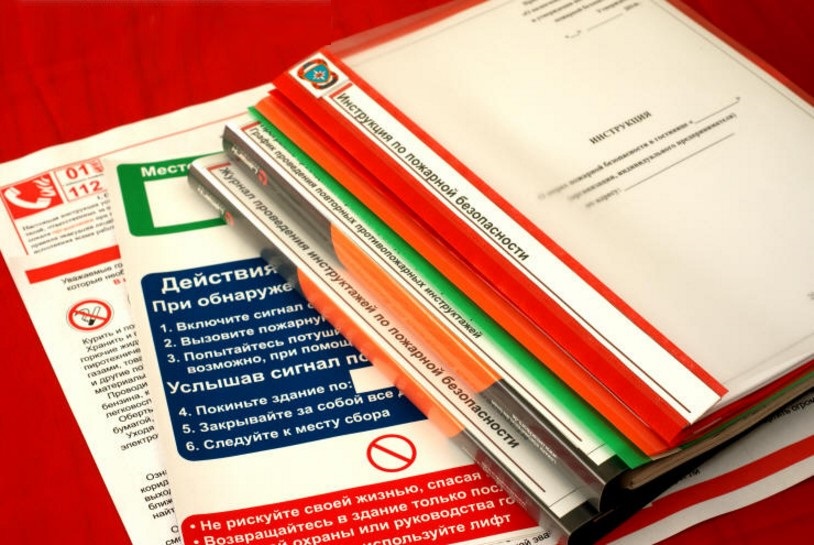 Fire safety documentation at the enterprise
Fire safety documentation at the enterprise Prerequisites for residential offices
If the office is located in a residential building, then such a room must necessarily have a separate entrance and emergency exit... Are presented special requirements to emergency exits:
- if indoors public use no more than 15 people work, while the office area is no more than 300 square meters, then one emergency exit located on the first or basement floor is enough;
- the doors of such exits must necessarily open in the direction of the exit from the room.
If there are more than 10 people in the office at the same time, then people should be developed and hung out in the event of a fire. In addition, it is planned to install a fire warning system for people.
Obligations of office workers
All employees working in offices should:
- know and comply with fire safety requirements, as well as follow the fire regime;
- follow safety precautions in the process of using gas appliances, household chemicals, as well as flammable substances and materials;
- report a fire to the fire department, take the necessary measures to save people, property and extinguish the fire.
Requirements for fire-fighting devices and systems
Everything fire protection systems and the devices installed in the office must be in good working order and immediately respond to the fire source, as evidenced by the fire safety requirements for office premises. Such devices include smoke protection, means fire automatics, the system fire water supply, valves, etc.
Concerning fire doors, their self-closing mechanism must be in good working order. Do not install any devices that will interfere with the normal closing of such doors or devices.
If the premises are rented
When renting a room, you need to provide the necessary conditions corresponding fire safety requirements, for a particular type of building.
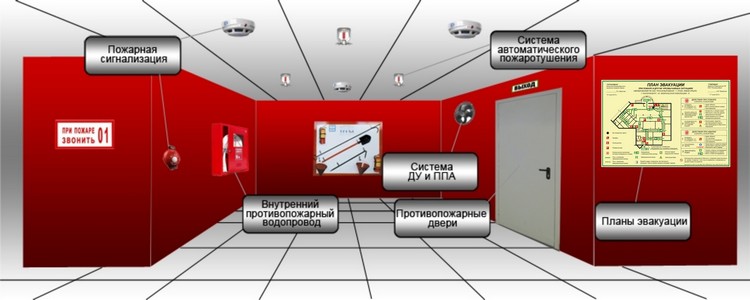 Scheme of mandatory means for ensuring fire safety in office space
Scheme of mandatory means for ensuring fire safety in office space So, it is prohibited:
- in basements and ground floors it is prohibited to store and use flammable and combustible liquids, gunpowder, explosives, gas cylinders, as well as goods in aerosol containers and other items that are not specified in regulatory documents;
- equip production areas, workshops and warehouses for storing products / furniture in attics, technical floors, ventilation chambers and other technical rooms;
- store combustible materials, arrange workshops and utility rooms on ground floors or in basements, where the entrance is isolated from general exits;
- dismantle evacuation doors from corridors, halls, vestibules, foyers and staircases provided for by the project. This also applies to doors that prevent the spread of fire;
- also, it is impossible to change the space-planning decisions leading to a deterioration in the conditions for the normal evacuation of people, restricting access to fire extinguishers, cranes and other fire safety equipment;
- to make changes, as a result of which the coverage of the automatic fire alarm system is reduced;
- change automatic installation fire extinguishing is possible only in case of redevelopment with additional protection of the room. Thus, it is imperative to install individual fire detectors or modular installations fire extinguishing;
- install furniture, equipment and other items near doors, hatches on the balcony and loggia, transitions to other sections and exits to evacuation stairs;
- clean the room and wash clothes using gasoline, kerosene and other flammable and combustible liquids. Also, frozen pipes must not be warmed up with blowtorches or in other ways using open fire;
- leave oiled material in the workplace;
- on windows and in the pits near the basement windows, put blind bars, unless, of course, this is indicated in the approved regulatory documents;
- make storage rooms in stairwells and on floor corridors for storing furniture, combustible materials and other items. On the first and basement floor, under flights of stairs it is possible to equip only those rooms in which the central heating control units will be located, as well as water meter units and shields, fenced off with special partitions.
Locks on escape doors should be made in such a way that people inside the office can easily open them from the inside without using a key.
Restrictions on the use of escape routes and exits
When using routes and exits for evacuation, you cannot:
- set up obstacles, that is, obstruct passages, corridors, elevator halls, platforms, stairs, doors and escape hatches. It is also not allowed to install various materials, products, equipment, garbage, industrial waste and other items in these places.
- in the vestibules of the exits, install various dryers or hangers for clothes and equip dressing rooms. In addition, inventory and materials cannot be stored in the vestibules, even temporarily;
- there should be no thresholds on the way to evacuation, in this case the thresholds placed in the correct openings are an exception. There should be no sliding and lift-and-slide doors, gates, turnstiles and revolving doors. The same applies to other devices that will interfere with the normal evacuation of people;
- use flammable materials as decoration, cladding and painting of the surfaces of the room, the same applies to steps and stairways leading to the emergency exit. Not counting only the buildings of the 5th degree of fire resistance;
- leave self-closing doors open on staircases, corridors, hallways and vestibules, unless, of course, they are installed for such purposes automatic devices that are triggered in case of fire. Also, such doors cannot be removed, even if they interfere to some extent;
- to glaze air zones or close them in smoke-free staircases;
- when glazing doors and transoms, install ordinary glass instead of reinforced;
- It is strictly forbidden to hammer the escape doors.
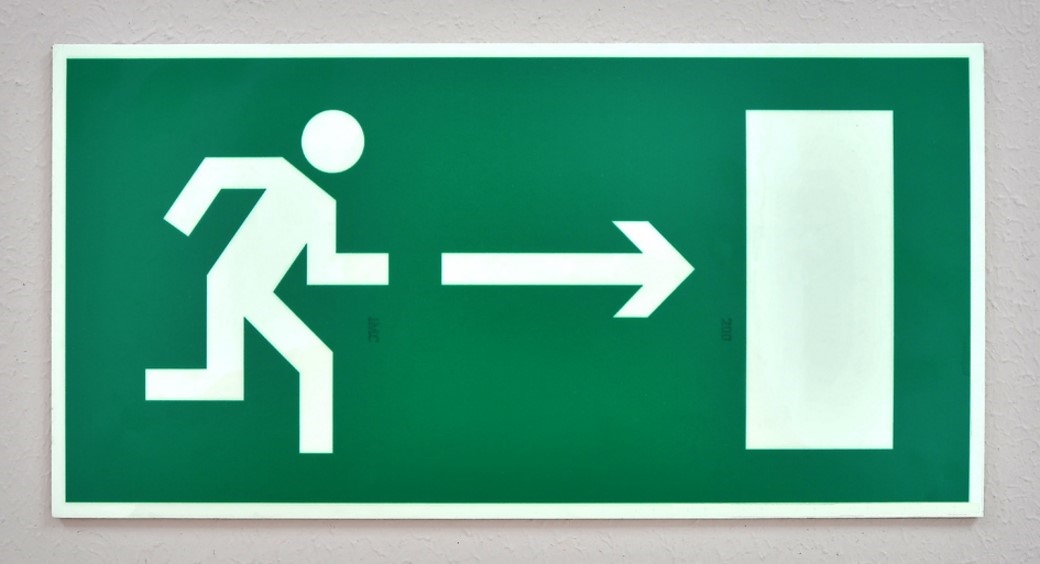 Direction indicator to the emergency exit
Direction indicator to the emergency exit Fire safety requirements when using electrical installations in the office
When using serviceable electrical installations in the office, you cannot:
- use receivers of electrical energy in those conditions that do not comply with the current requirements of the manufacturer's instructions. Also, do not use receivers with malfunctions that could cause a fire. The same requirements apply to electrical wires and cables with poor or damaged insulation;
- operate damaged sockets, switches and other wiring accessories;
- wrap lamps and light bulbs with any paper, cloth or other material that could cause a fire. In addition, it is not allowed to operate luminaires with dismantled diffusers, if their presence is provided for by the design of the product;
- use electrical appliances such as iron, kettle and other electric heating items that do not have thermal protection devices. To eliminate the risk of fire, the stands of electrical appliances must be made of non-combustible materials;
- the use of non-standard electric heating devices is not allowed in the office. Safety precautions also prohibit the presence of uncalibrated fuse-links and other devices designed to protect against overload and circuit short-circuits;
- locate or leave flammable substances and materials near electrical panels, motors and starters.
Requirements for extinguishing media
As a rule, all fire hydrants must have hoses and trunks, while the rules for connecting the hose to the crane and the trunk are observed. For preventive purposes and according to the instructions, the sleeves are rolled onto another roll. This activity should be performed at least once a year.
Fire automatic equipment, corresponding to the design documentation, must be functional and ready for work at any time.
In an office space, building or structure, there must be primary means for extinguishing fires.
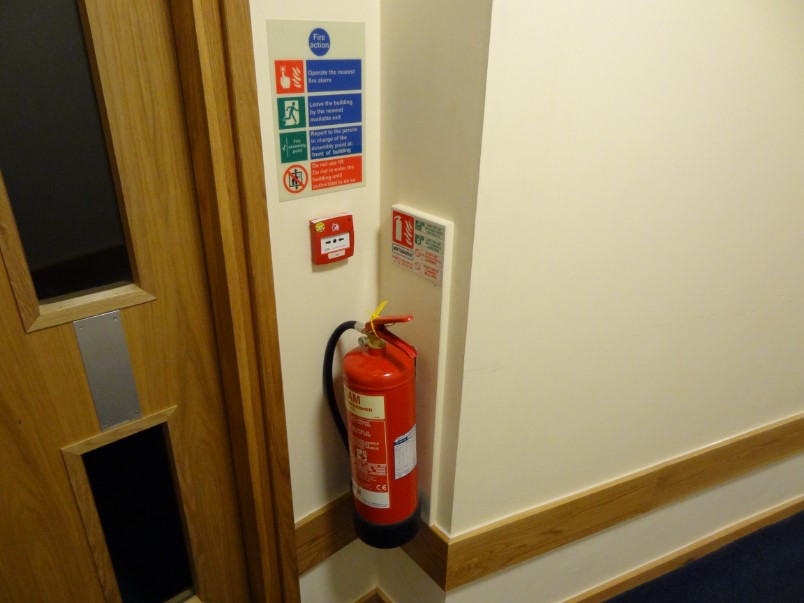 Placement example primary funds fire extinguishing in the office space
Placement example primary funds fire extinguishing in the office space One two-liter powder fire extinguisher is enough for an area of 100 square meters. If there are several rooms, then each of them must have its own fire extinguisher.
What should be done when a fire is detected or a fire source is identified?
If a fire breaks out in the office space or there are any signs of combustion, which include smoke, a burnt smell and an increase in air temperature, you need to:
urgently call the fire department, quickly giving the address of the location of the object, the place where the fire was detected and your name;
if possible, evacuate people, try to extinguish the fire on their own and save valuable things and documents.
To prevent the risk of fire, proper fire safety in the office must be ensured, documents for 2016 will help to take into account all the requirements and norms corresponding to a particular specialization of the organization.
It is also important to adhere to the mandatory fire safety rules that every employee gets acquainted with when applying for work. The bosses, in turn, must ensure and comply with all the requirements prescribed in the administrative documents.
4.1.1. The territory of enterprises, areas bordering residential buildings, summer cottages and other buildings, fire breaks between buildings, structures, storage areas for materials, equipment, etc. must be constantly kept clean and systematically cleaned of garbage, production waste, containers, fallen leaves, which must be regularly removed (taken out) to specially designated places.
4.1.2. It is prohibited to arrange dumps of combustible waste on the territory of settlements and enterprises.
4.1.3. Roads, driveways and passages to buildings, structures, fire water sources, approaches to external stationary fire escapes, fire equipment, equipment and fire extinguishing means must always be free, kept in good order, and cleaned of snow in winter.
It is prohibited to arbitrarily reduce the standardized width of roads and driveways.
4.1.4. All buildings and structures of the enterprise must be provided with free access. Fire breaks between buildings, structures, open areas for storing materials, equipment, etc. must comply with building codes. They are not allowed to clutter up, use for storage of materials, equipment, parking lots, construction and installation of temporary buildings and structures, including inventory household premises, individual garages, etc.
4.1.5. The construction of new buildings and structures (including temporary ones) on the territory of enterprises can be carried out only if there is design documentation that has passed a preliminary examination (check) in the state fire supervision authorities for compliance with fire safety regulations.
It is not allowed to attach to buildings with fencing with metal structures containing combustible polymer insulation (expanded polystyrene, polyurethane foam, etc.), storerooms, workshops and other premises.
4.1.6. The closure of sections of roads or driveways for repairs (or for other reasons) must be immediately reported to the fire brigade. For the period of road closure, detour direction indicators should be installed in the appropriate places or crossings should be arranged, repaired.
4.1.7. On single-lane driveways, traveling platforms should be arranged, and dead-end driveways should end with turning platforms that provide the possibility of turning the fire trucks. These sites must meet the requirements of DBN 360-92 ** "Urban planning. Planning and development of urban and rural settlements".
4.1.8. The main roads, driveways, passages must have a hard surface. When arranging passages for fire trucks to buildings, structures and water sources, a dirt road must be strengthened with slag, gravel or other local materials to ensure accessibility at any time of the year.
4.1.9. Rail tracks, temporary trenches and ditches should not obstruct the movement of fire trucks. For this, convenient crossings must be equipped in the necessary places, always free for fire trucks to pass.
Driveways and passages through railway tracks must have continuous decks at the level of the railheads. Parking wagons without locomotives at level crossings is prohibited.
4.1.10. The gates of entry to the territory of the enterprise, which are opened with the help of an electric drive, must have devices (devices) that allow them to be opened manually.
4.1.11. In areas of the territory of enterprises where accumulations of flammable gases or vapors are possible, the passage of cars and other vehicles is not allowed. The corresponding inscriptions (signs) should be posted about this.
4.1.12. The territory of enterprises and other objects should have outdoor lighting, which ensures quick finding of fire escapes, fire-fighting equipment, entrances to buildings and structures.
4.1.13. On the territory of rural settlements, trailer houses, summer cottages and horticultural settlements in places determined by local authorities, devices for giving sound signals must be installed in order to alert people in case of fire and there must be a supply of water for fire extinguishing, the amount of which must correspond building code requirements.
4.1.14. The territory around settlements, summer cottages and horticultural settlements, objects located in forest areas should be maintained in such a way as to exclude the possibility of transferring forest, peat fires to buildings and structures, and in the event of a fire at objects - the spread of fire to forest areas (installation of protective fire strips, cleaning in the summer of dry vegetation, dead wood, etc.).
From forests to buildings and structures, fire breaks must be sustained in accordance with the requirements of building codes.
4.1.15. On the territory of residential buildings, summer cottages and horticultural settlements, public buildings, car cooperatives and parking lots, it is prohibited to leave in open areas and yards barrels and other containers with flammable liquids (hereinafter - flammable liquids) and flammable liquids (hereinafter - OS), cylinders with compressed and liquefied gas, acetylene generators with remnants of unused calcium carbide or carbide sludge, as well as keep gas cylinders, barrels (containers) are not cleaned of flammable and combustible liquids residues.
4.1.16. Temporary structures, kiosks, stalls, etc. should be located at a distance of at least 10 m from other buildings and structures, except when, according to building codes, a larger fire gap is required or when they can be installed near external walls without holes that meet the requirements of building codes for fire walls.
Inventory buildings of a mobile type, kiosks, and other similar buildings are allowed to be placed in groups, but no more than 10 in a group and an area of no more than 800 m2. The distance between the groups of these buildings and from them to other structures must be at least 15 m.
4.1.17. On the territory of the enterprise, in conspicuous places, plates should be installed indicating the procedure for calling the fire brigade, signs of the locations of primary fire extinguishing equipment, a traffic diagram, in which the location of buildings, reservoirs, hydrants, piers and cooling towers should be indicated (the need to establish such a scheme on each specific the enterprise is determined by the local authorities of the state fire supervision.
4.1.18. Parking of vehicles in through passages of buildings at a distance of less than 10 m from the entrance gates to the territory of objects, less than 5 m from fire hydrants, intakes of water sources, fire equipment and equipment, at turning platforms of dead-end passages is prohibited. In the indicated places, appropriate prohibition signs must be installed (hung out).
4.1.19. The grounds in front of the stands of open sports facilities, at the entrances and exits of buildings of sports facilities with seats for spectators, theaters, clubs, cinema and concert halls should not have protrusions, obstacles that interfere with the movement of people. It is not allowed to reduce their calculated width, increase the slopes, install kiosks, stalls and other structures on them.
4.1.20. It is not allowed to make fires, burn waste, containers, throw out unquenched coal and ash at a distance of less than 15 m from buildings and structures, as well as within the limits established by building codes for fire breaks.
4.1.21. Smoking is prohibited:
on the territory and in the premises of facilities for the production, processing and storage of flammable liquids, combustible liquids and combustible gases (hereinafter - GG), production of all types of explosives;
in buildings with explosive and fire hazardous premises (areas), trade enterprises, warehouses and bases;
in the premises of preschool, school and medical institutions;
on cereal tracts and grain shops.
On the territory of facilities where smoking is allowed, the administration is obliged to determine and equip special places for this, mark them with a sign or an inscription, install an urn or ashtray made of non-combustible materials.
In order to reduce or minimize the risk of a fire, it is imperative and strict to comply with the fire safety requirements for buildings and premises, while it is important to create all the necessary conditions in accordance with the rules and regulations.
The territory of the warehouse, equipped with the requirements of fire safety
In addition to buildings and premises, you also need to follow the requirements for the maintenance of territories.
To ensure proper fire safety, you must comply with the following requirements:
- territory near industrial buildings, premises and warehouses must be promptly cleaned of garbage, combustible waste and dry grass. In fire-prevention gaps between structures, cannot be used as storage space various materials, containers and equipment;
- all roads, entrances and passages to structures that have a water source must be free at any time;
- on the territory of any organization or production, there should be outdoor lighting that allows you to quickly navigate in the dark in the event of a fire;
- It is strictly forbidden to smoke on the territory, as well as in warehouses, grain receiving points, at the objects of trade, production and processing of flammable liquids, combustible liquids and other materials. In addition, you must not smoke in places not intended for these purposes, in particular in preschool or school premises and on cereal tracts;
- it is forbidden to make fires, burn waste and containers on the territory near industrial buildings and premises. For these purposes, provision of special places should be provided. The process itself must be controlled by the service personnel;
- on the territory of residential settlements and organizations it is prohibited to make landfills for combustible materials.
Fire safety rules applicable to the maintenance of buildings and premises
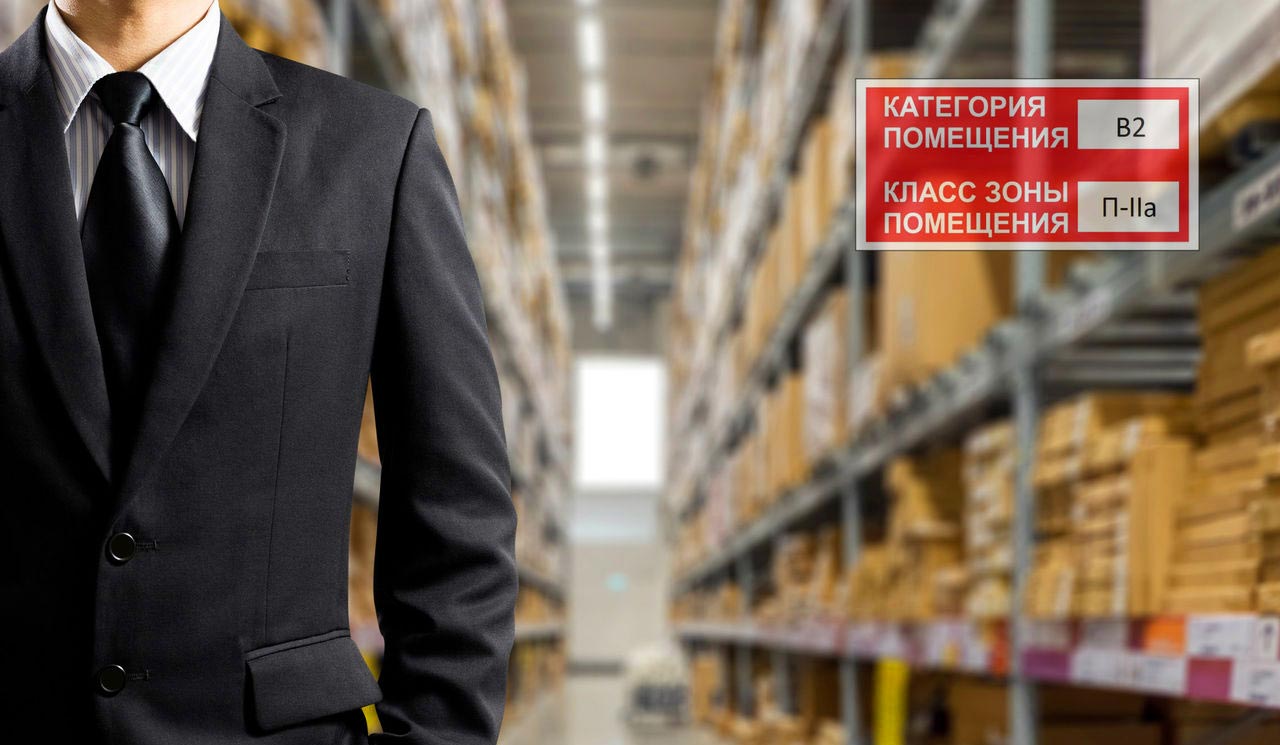 Warehouse category B2
Warehouse category B2 To ensure proper fire safety in buildings and premises, the following requirements must be strictly followed:
- for all premises of the production and warehouse destination the class of fire hazard of buildings and structures is determined in accordance with the NPB;
- near equipment with an increased fire hazard, you need to hang the necessary safety signs;
- all fire-preventing systems and devices must be in good working order, this applies to smoke protection, fire automatic equipment, fire doors, valves and other means located in fire walls and ceilings;
- devices for self-closing doors must be in working order. Cannot be installed various devices that will interfere with the normal closing of the doors;
- fire escapes outside and fences on roofs or coverings of buildings and premises must be in good working order. They must undergo routine operational tests; it is enough to carry out such an event at least once every five years;
- if there is only one emergency exit in the room, then 50 or more people are not allowed to stay in it at the same time. When there is a power outage in rooms with mass stay maintenance personnel must use electric lights. Their number is determined based on the characteristics of a particular object, the number of personnel on duty and the number of people in the building;
- the doors leading to the attic, technical floors and basements are locked, that is, to those rooms in which people should not be constantly. On such doors, information about the place where the keys are kept must be indicated. Windows in attics, technical floors and basements must be glazed and closed;
- in all rooms, regardless of their purpose, there must be signs with the fire department telephone number.
Restrictions for buildings and structures
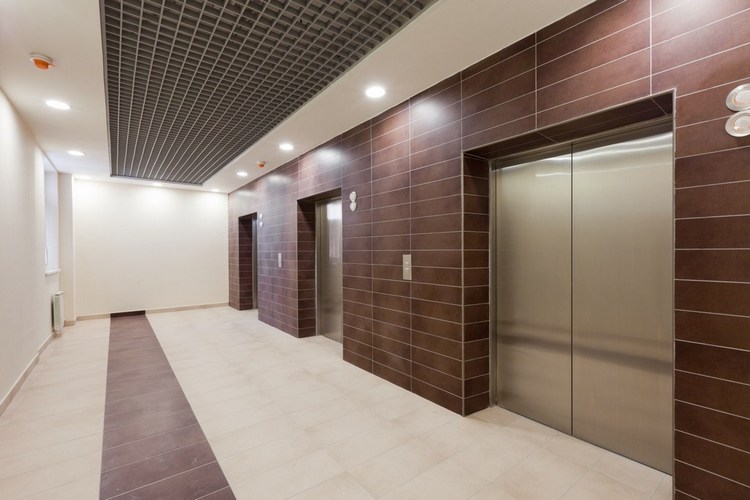 elevator hall buildings in compliance with fire safety standards
elevator hall buildings in compliance with fire safety standards There are some important restrictions on buildings and structures:
- and structures is observed if flammable and combustible liquids, as well as gunpowder, explosives are stored and used on the basement floors or in basements, gas cylinders, aerosol products and other materials that should not be in the room in accordance with the current regulatory documents;
- it is prohibited to use technical floors, attics and ventilation chambers as production areas and workshops. In addition, products, equipment, furniture and other items cannot be stored in such premises;
- it is prohibited to place pantries, stalls and kiosks in the elevator halls;
- there should be no warehouses of combustible materials and workshops on ground floors or in basements, in particular if the entrance to these premises is not separated from the common staircase;
- It is strictly forbidden to remove exit doors for evacuation in premises such as floor corridors, halls, foyers, vestibules and stairwells. Also, no changes are envisaged in space-planning decisions that may cause a deterioration in conditions for the safe evacuation of people, in particular, this concerns the restriction of access to fire extinguishers, fire hydrants and other fire safety items. In addition, due to incorrect decisions, the coverage area of automatic protection systems can be significantly reduced;
- according to fire safety requirements, it is forbidden to obstruct doors, exits to loggias and balconies, as well as passages to adjacent sections or to escape stairs with furniture, equipment or other unnecessary items;
- in the process of cleaning premises and washing clothes, gasoline, kerosene and other flammable and combustible liquids must not be used. It is necessary to warm up frozen pipes without the use of blowtorches and other methods involving the use of open fire;
- you need to immediately remove the oiled cleaning material;
- it is not allowed to install blank grilles on windows and pits near basement windows. The exceptions are cases when this clause is stipulated in the rules and regulations, while being approved in the correct order;
- glazing of balconies, loggias and galleries that lead to smoke-free staircases is not allowed;
- it is forbidden to equip storage rooms in staircases or in corridors between floors, as well as to store unnecessary things, furniture and non-combustible materials on sites. There may be control rooms under the staircases on the ground and basement floors. central heating and switchboards with partitions made of non-combustible materials;
- it is forbidden to put additional doors or change their direction from the premises to the common corridor, that is, on staircase... Because of this, the operating conditions deteriorate;
- can not be done in production areas and warehouses mezzanines or other built-in rooms using combustible materials and sheet metal... The only exceptions are buildings of the 5th degree of fire resistance.
Fire safety requirements for the joint storage of substances and materials
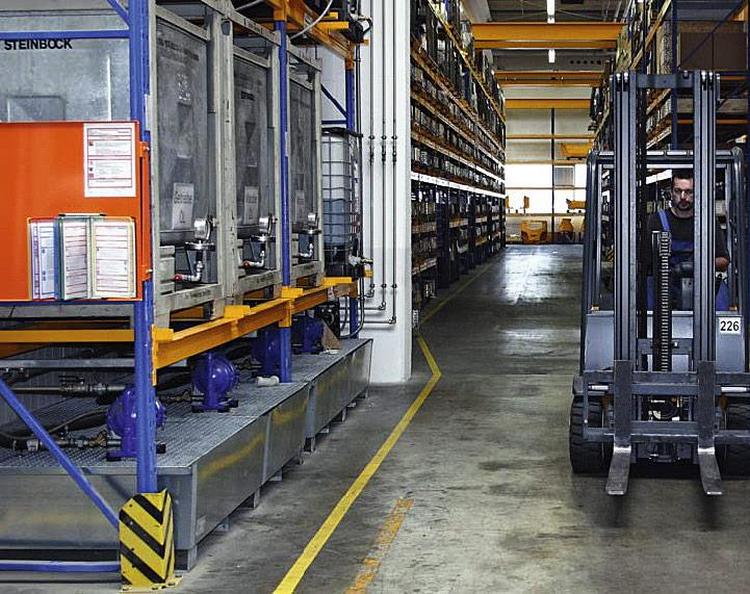 Warehouse for joint storage of substances and materials with a corresponding fire hazard category
Warehouse for joint storage of substances and materials with a corresponding fire hazard category There are materials and substances that pose a potential hazard to human health in the event of a fire. They poison the environment, affect the body through the skin, the mucous membrane of the respiratory tract, as well as through contact or at a distance. Such materials and substances can be:
- safe;
- low-hazard;
- dangerous;
- especially dangerous.
The first type includes non-flammable substances and materials in safe packaging, which do not emit hazardous decomposition products in case of fire. They can be stored indoors or in any open areas, if there are no certain restrictions regarding storage conditions.
The second type is combustible and hardly combustible substances, as well as materials that are classified as safe. They are allowed to be stored in any warehouses, except for premises of the 5th degree of fire resistance.
Flammable and non-combustible materials and substances are considered hazardous, which in the event of a fire can cause an explosion, intensify fires, death of people, animals, as well as damage to structures and Vehicle... Manifestations of hazardous properties can be observed both under normal and under emergency conditions. In addition, interaction with materials and substances of other categories is possible.
Hazardous components and items can be stored exclusively in warehouses of the 1st and 2nd class of functional fire hazard of a building, how to determine this indicator? It is indicated in regulatory documents or in current GOSTs.
Substances and materials incompatible with components of the same category are especially dangerous. They are allowed to be stored only in warehouses of the 1st and 2nd degree of fire resistance, which must be located in separate buildings.
Joint storage of materials and substances is possible taking into account the quantitative indicators of fire hazard, chemical activity, toxicity and homogeneity of fire extinguishing media.
In accordance with the combination of properties of substances, the storage compatibility of certain materials is also determined. Section 13 PB 01 - 03 "Objects of storage" are indicated in relation to the storage point.
Requirements for the storage of flammable and combustible substances
For storage of flammable and hazardous substances, special conditions must be created:
- substances and materials with fire hazard physicochemical properties must be stored in specially equipped warehouses;
- gas cylinders, as well as containers with flammable and combustible liquids must be reliably protected from penetration sunlight and heat exposure;
- flammable gas cylinders should not be located near oxygen cylinders, chlorine, compressed air, fluorine and other oxidizers, this also applies to cylinders with toxic gases;
- for storage of cylinders with flammable gases with shoes, special slots for vertical arrangement should be provided. Thus, the risk of their falling is excluded. Cylinders without shoes must be stored horizontally on special frames or racks. The stacks can be no more than one and a half meters high, while the valves must be closed with caps and directed in one direction;
- no other materials, substances and equipment should be stored together with gases in cylinders;
- parking or repair of various vehicles is not allowed in the warehouse;
- it is not allowed to store flammable and combustible liquids in shop closets if their quantity exceeds the norms established by the organization. There are also restrictions at workplaces, the amount of flammable liquids should be no more than the replaceable need;
- natural ventilation must be provided in warehouses for storing flammable gases;
- store flammable liquids and combustible liquids can be stored in one room if their total quantity does not exceed 200 m3;
- different coal must be laid separately from each other;
- if coal storage is envisaged, it is not allowed to get into the stacks of wood, fabric, paper and other combustible waste.
V production processes you cannot use materials and substances with unknown indicators of fire hazard and in the absence of certificates. It is also prohibited to store and store them.
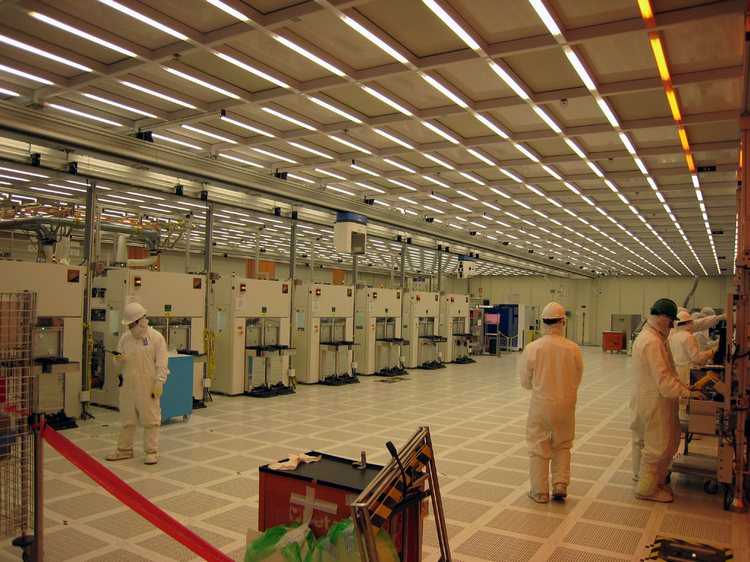 Production room where poisonous and hazardous substances are used
Production room where poisonous and hazardous substances are used Production managers that use, store and process explosive materials must report data on them. fire service... Such measures are required to ensure the fire safety of the team that will work in the process of extinguishing the fire.


